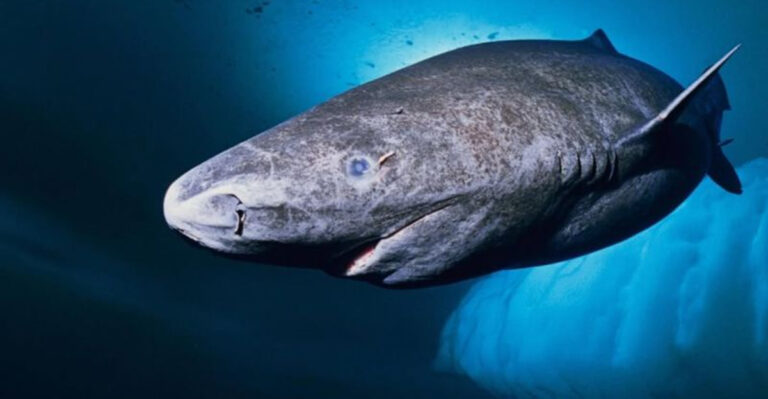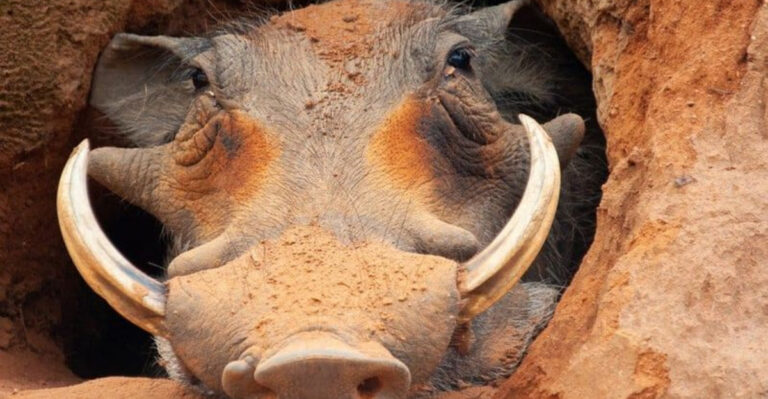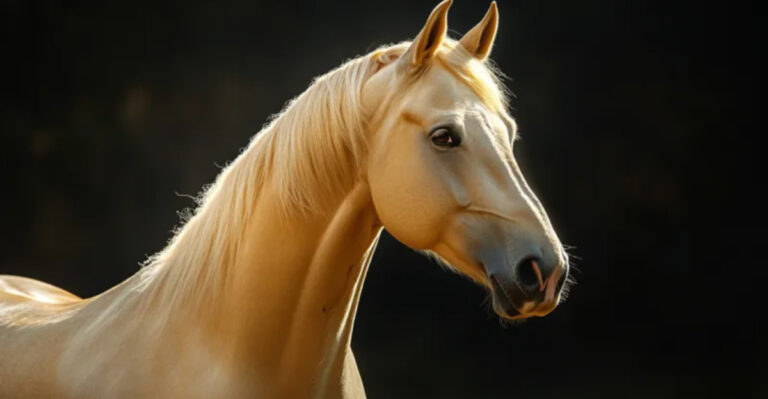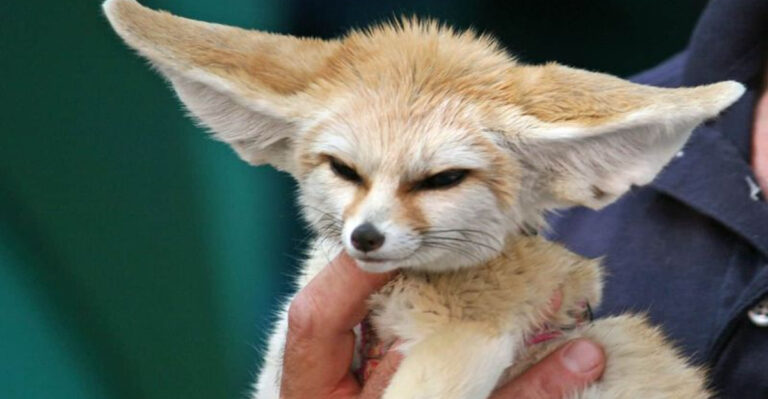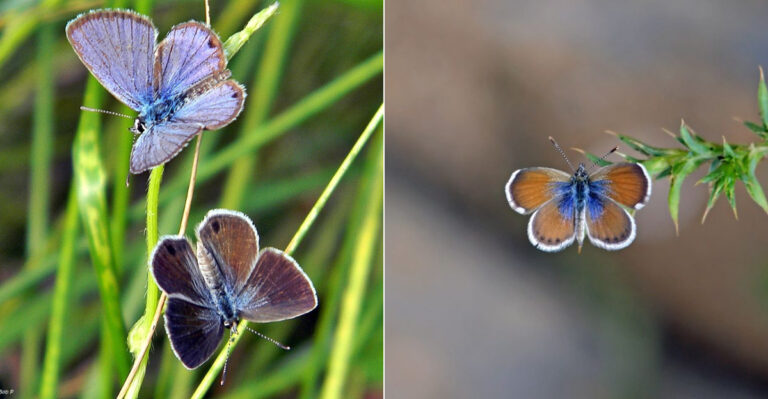15 Serene Lakes Where You Might Spot A Bald Eagle Nesting
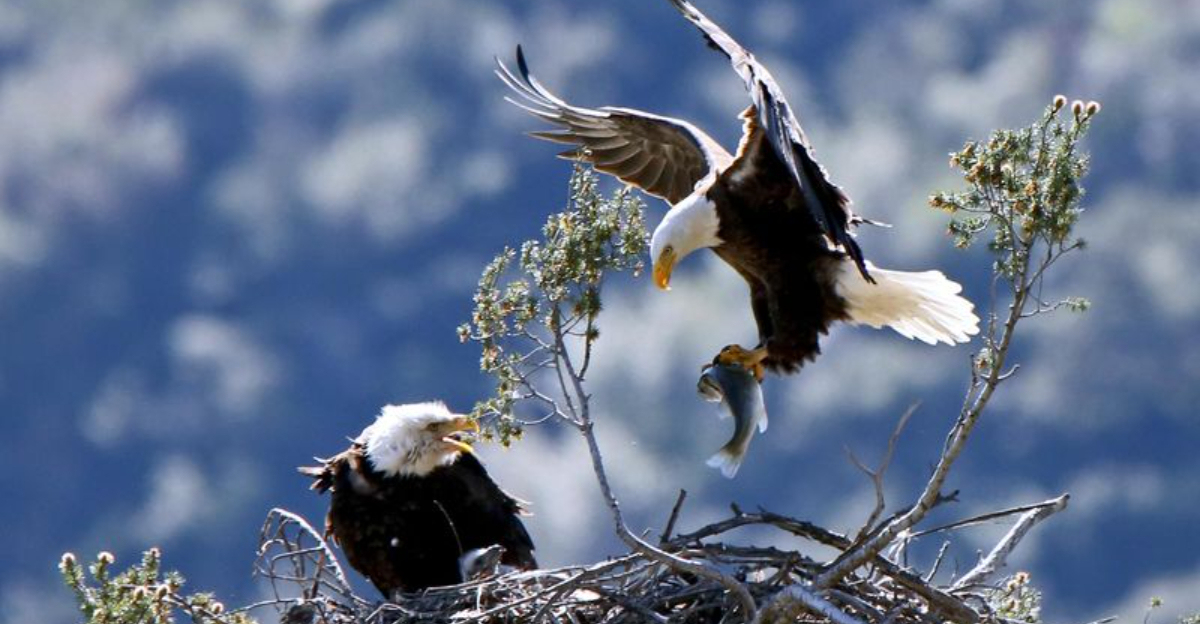
Bald eagles, America’s national symbol, build massive nests near water where fish are plentiful. These majestic birds create homes that can weigh up to a ton and measure 8 feet wide!
Watching a bald eagle soar above a peaceful lake or return to its nest with a fresh catch is an unforgettable experience for nature lovers.
Pack your binoculars and visit these beautiful lakes where you might witness these incredible birds in their natural habitat.
1. Lake Coeur d’Alene, Idaho
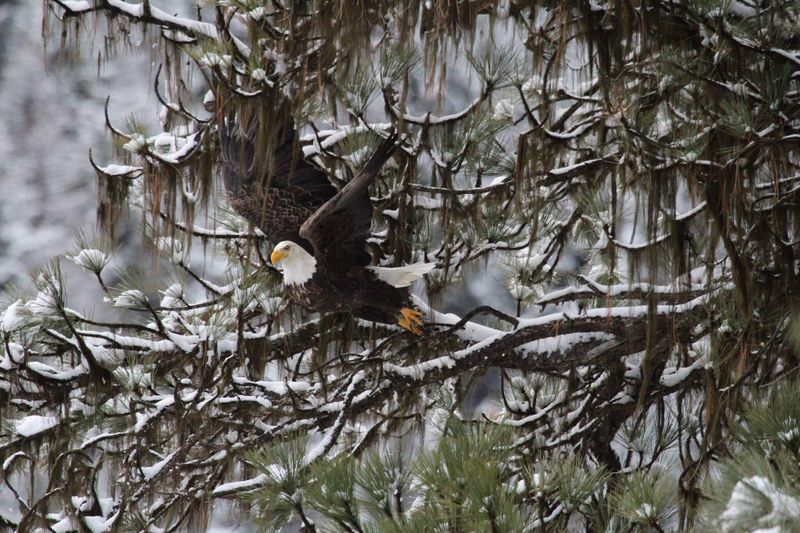
Snow-capped mountains reflect in the crystal-clear waters of Lake Coeur d’Alene, creating a breathtaking backdrop for eagle watching. Winter brings hundreds of bald eagles to this northern Idaho gem, drawn by the abundant kokanee salmon.
Local boat tours specifically designed for eagle spotting operate from November through January. The Wolf Lodge Bay area hosts the highest concentration of nesting pairs.
The lake’s 109 miles of shoreline provide countless viewing opportunities. Bring a camera with a zoom lens to capture these magnificent birds diving for fish or perched regally in tall ponderosa pines along the shore.
2. Reelfoot Lake, Tennessee
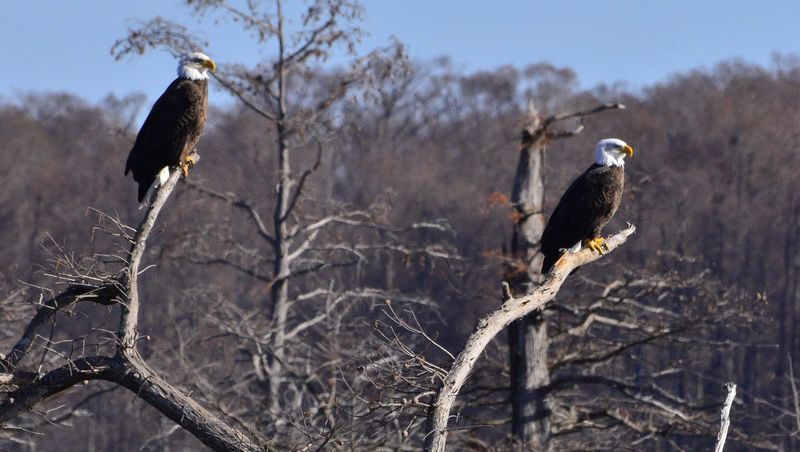
Formed by earthquakes in the early 1800s, Reelfoot Lake’s haunting cypress trees create a unique landscape unlike any other eagle habitat. January and February bring dozens of nesting pairs to this shallow, natural wonder.
The lake’s abundant fish population provides perfect hunting grounds for eagles raising their young. Guided pontoon tours weave through cypress knees and water lilies, getting you close to active nests.
Morning fog often shrouds the lake, creating magical moments when eagles emerge from the mist. The Reelfoot Lake State Park offers ranger-led eagle watches during peak season with spotting scopes available for visitors.
3. Klamath Basin, Oregon/California

Straddling the Oregon-California border, the Klamath Basin hosts the largest wintering bald eagle population in the lower 48 states. Six national wildlife refuges protect this critical habitat where over 500 eagles gather during peak season.
Dawn breaks dramatically over Upper Klamath Lake as eagles leave their roosts to hunt. The Basin’s shallow lakes and marshes support massive fish populations that sustain these magnificent birds.
February brings the annual Winter Wings Festival, celebrating the eagle migration with guided tours and photography workshops. Eagle spotting is almost guaranteed along the auto tour routes through Lower Klamath and Tule Lake National Wildlife Refuges.
4. Quabbin Reservoir, Massachusetts

Nestled in central Massachusetts, Quabbin Reservoir represents one of the Northeast’s most successful eagle recovery stories. Once extinct in the state, bald eagles now thrive here, with dozens of nesting pairs returning annually.
The reservoir’s 181 miles of protected shoreline provide undisturbed nesting sites. Eagle pairs often use the same massive nests year after year, adding new materials each season.
Gate 8 offers particularly good viewing opportunities from a respectful distance. Winter visitors might witness eagles breaking ice with their powerful talons to reach fish below, while summer brings the spectacle of young eaglets learning to fly from their towering nests.
5. Lake Of The Ozarks, Missouri
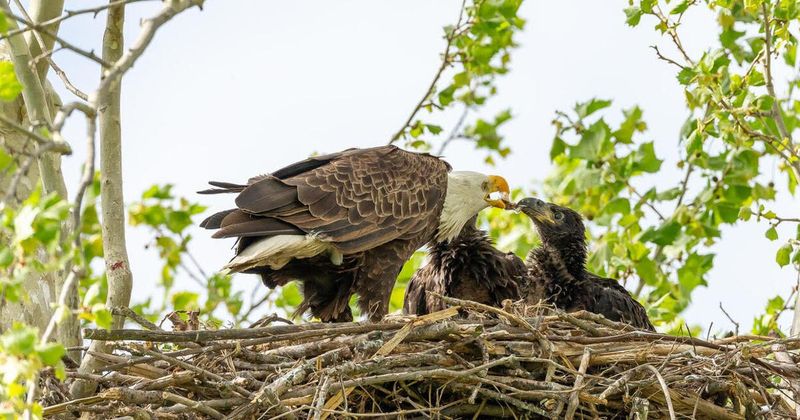
The winding arms of this massive reservoir create perfect hunting grounds for the growing bald eagle population in Missouri’s heartland. January counts regularly document over 150 eagles along these serpentine shores.
Lake of the Ozarks State Park offers designated eagle viewing platforms. The lake’s numerous coves provide sheltered nesting areas away from boat traffic.
Local conservation efforts have helped eagle numbers rebound dramatically since the 1970s. Eagle Days events in January feature live eagle demonstrations with rehabilitated birds, spotting scopes, and naturalists to help visitors identify these magnificent creatures in the wild.
6. Lake Cascade, Idaho
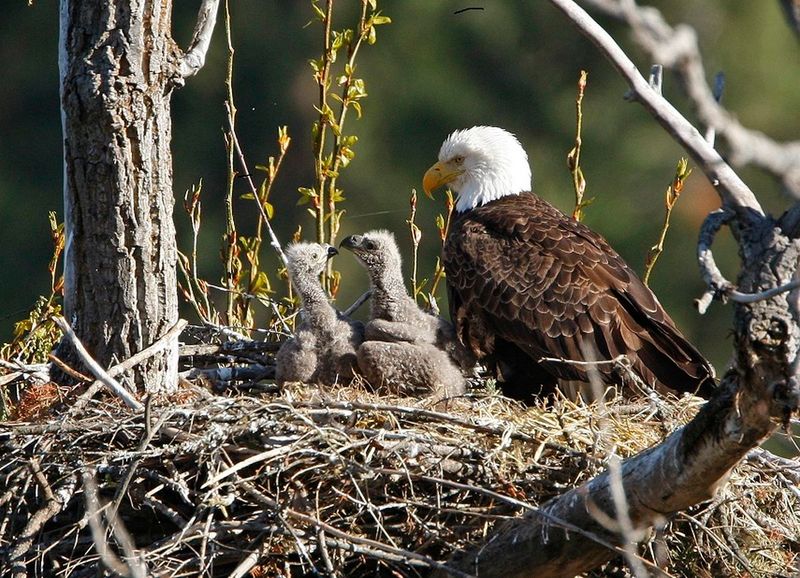
Mountain vistas surround Lake Cascade, where nesting bald eagles have made a remarkable comeback in recent decades. The lake’s healthy perch and trout populations provide ideal hunting for eagle families establishing territories.
Crown Point and Sugarloaf Island host active nests that can be viewed from the water. Eagles here often hunt cooperatively – one bird flushing fish toward its mate waiting to strike.
The lake’s north end near Tamarack Falls offers excellent eagle watching opportunities. Visitors in February might witness the spectacular courtship ritual where eagles lock talons mid-air and spiral downward in a breathtaking free-fall, separating just before hitting the water.
7. Beaver Lake, Arkansas

Tucked into the Ozark Mountains, Beaver Lake’s limestone bluffs create perfect perches for eagles surveying the clear waters below. The lake’s 28,000 acres remain relatively undeveloped, providing pristine habitat for over 30 nesting pairs.
Rocky outcroppings along the shoreline serve as hunting platforms. Eagles here have adapted to the lake’s seasonal patterns, following the striped bass runs in winter.
The Hobbs State Park-Conservation Area maintains eagle viewing areas with interpretive signs. Early morning canoe trips offer intimate wildlife encounters as eagles swoop low over the misty water, their wingspans casting impressive shadows across the lake’s surface.
8. Lake Umbagog, New Hampshire/Maine

Spanning the border between New Hampshire and Maine, Lake Umbagog’s remote wilderness attracts nesting eagles seeking solitude. The lake’s numerous islands provide safe havens for raising young, away from human disturbance.
Kayakers might spot eagles perched on standing dead trees along the shoreline. The lake’s shallow, weedy areas support abundant fish populations that eagles harvest with spectacular diving displays.
The Umbagog National Wildlife Refuge protects critical eagle habitat around the lake. Early morning paddlers often witness eagles bathing – an impressive sight as these massive birds splash and shake, sending water droplets flying in golden arcs through the sunrise light.
9. Yellowstone Lake, Wyoming
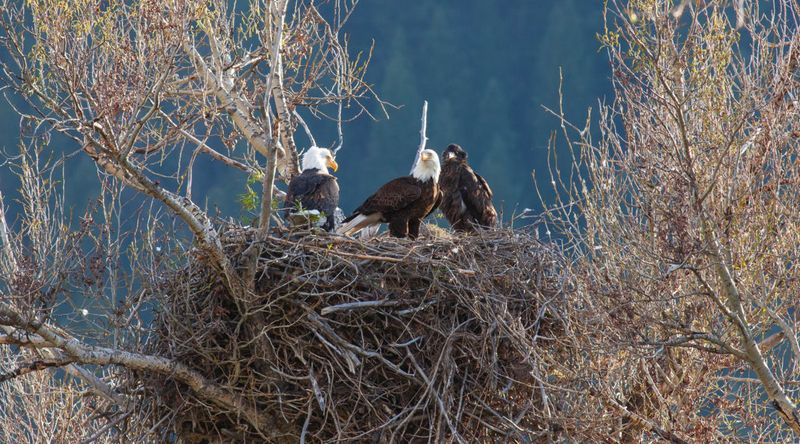
North America’s largest high-elevation lake hosts several eagle nesting sites amid Yellowstone’s breathtaking volcanic landscape. The lake’s cutthroat trout provide a reliable food source for eagles raising their young in this harsh mountain environment.
Fishing Cone and Steamboat Point offer excellent viewing opportunities. Eagles here have adapted to the park’s thermal features, sometimes hunting in areas where warm water keeps parts of the lake ice-free during winter.
Park rangers lead eagle-watching excursions during summer months. The contrast of white-headed eagles against the steaming geysers and brilliant blue water creates unforgettable photographic opportunities in this wild, geothermal wonderland.
10. Jordan Lake, North Carolina
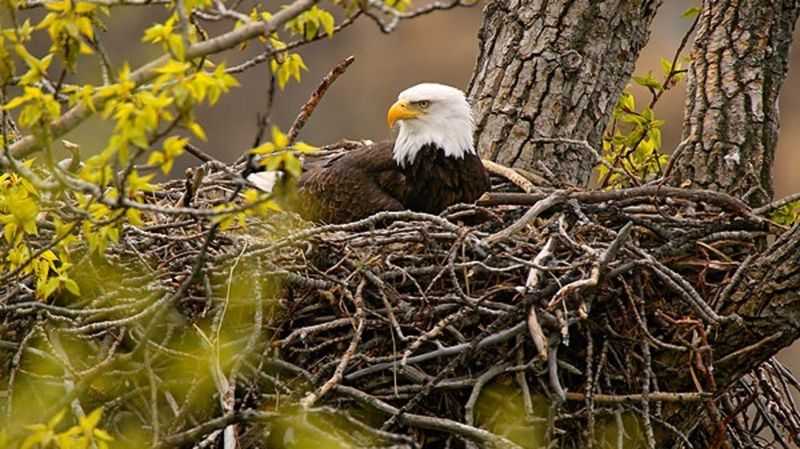
Just outside Raleigh-Durham, Jordan Lake has become an unexpected eagle sanctuary in the heart of North Carolina. The lake’s shallow, nutrient-rich waters support over 50 nesting pairs – one of the largest concentrations in the eastern United States.
The Ebenezer Church Recreation Area provides excellent viewing platforms. Winter brings additional migratory eagles joining the resident population.
Local photographers often gather at sunrise at the Highway 64 bridge crossing to capture eagles fishing in the early morning light. The New Hope Overlook offers spotting scopes and interpretive programs explaining how these magnificent birds have reclaimed this human-created reservoir as their own.
11. Lake Champlain, Vermont/New York
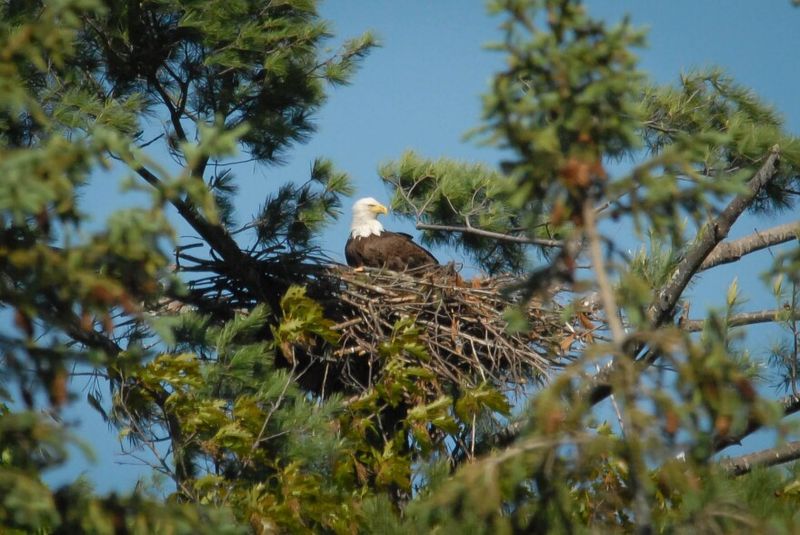
Stretching 120 miles between the Green Mountains and Adirondacks, Lake Champlain provides ideal eagle habitat along its island-dotted shoreline. The lake’s deep waters remain partially open even during harsh northern winters, allowing year-round fishing.
The Missisquoi National Wildlife Refuge protects critical nesting areas. Eagles here often incorporate unusual materials into their nests, including fishing line and colorful baling twine from nearby farms.
Button Bay State Park offers excellent viewing opportunities from safe distances. Visitors in March might witness the spectacular sky-dancing courtship display, where eagles perform barrel rolls and steep dives to impress potential mates in this picturesque mountain-framed setting.
12. Pymatuning Reservoir, Pennsylvania/Ohio
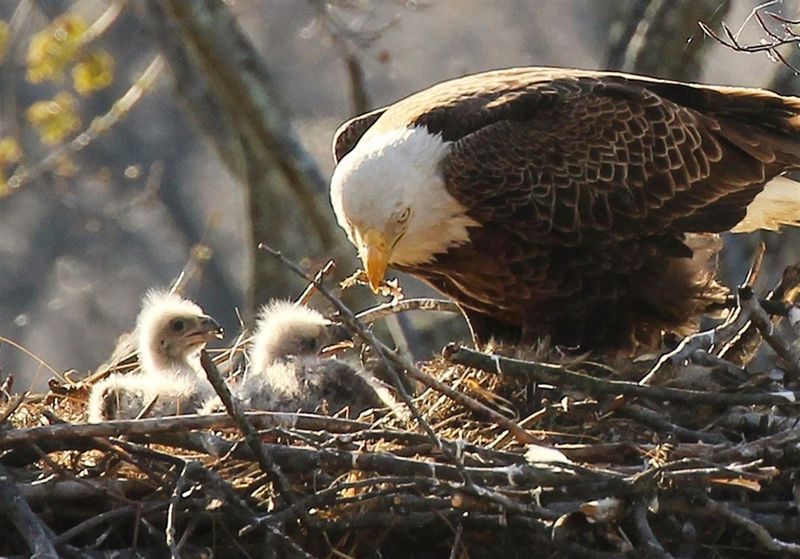
Straddling the Pennsylvania-Ohio border, Pymatuning’s shallow waters freeze unevenly in winter, creating perfect hunting conditions for the growing eagle population. The reservoir’s abundant walleye and crappie attract dozens of nesting pairs.
The causeway crossing the lake provides excellent viewing opportunities. Eagles here have become remarkably tolerant of respectful human observers.
The Linesville Spillway, famous for its bread-eating carp, also attracts eagles looking for an easy meal. Winter visitors might witness the impressive spectacle of eagles stealing fish from osprey or engaging in mid-air food transfers between mates – a breathtaking display of aerial coordination.
13. Lake Winnibigoshish, Minnesota

Deep in Minnesota’s northwoods, “Lake Winnie” hosts one of the Midwest’s most robust eagle populations. The surrounding Chippewa National Forest contains the highest nesting density of bald eagles in the lower 48 states.
Williams Narrows offers prime viewing opportunities from land. Eagles here build some of the largest nests recorded – some exceeding 10 feet in diameter after decades of use.
The lake’s island-dotted expanse provides perfect hunting grounds. Visitors in April might witness parents teaching fledglings to fish, with young eagles making awkward, splashy attempts before mastering the precise talons-first dive that will sustain them throughout their long lives in this pristine wilderness.
14. Lake Tahoe, California/Nevada
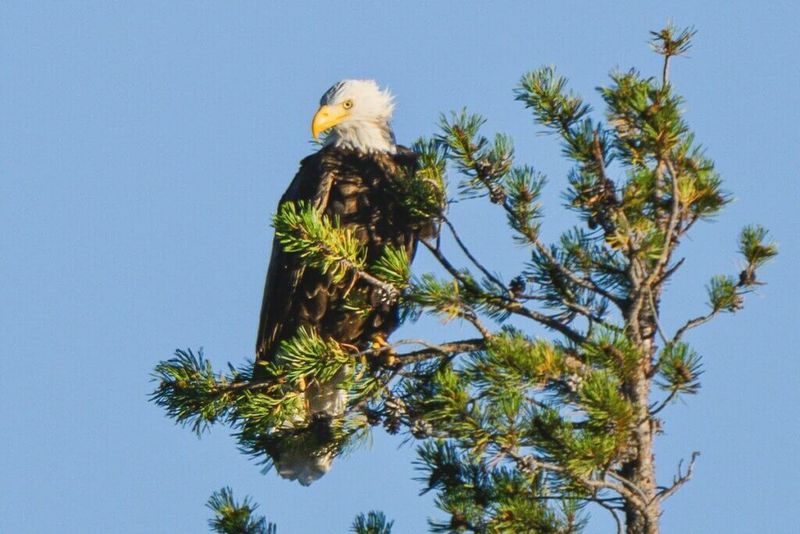
Ringed by snow-capped Sierra Nevada peaks, Lake Tahoe’s cobalt blue waters attract nesting eagles to its less-developed eastern shore. The lake’s clarity allows eagles to spot fish swimming at remarkable depths.
Emerald Bay State Park offers excellent viewing opportunities. Eagles here have adapted to the high-altitude environment, sometimes incorporating Jeffrey pine cones into their massive nests.
The Cave Rock area on the Nevada side hosts several active nests. Winter visitors might spot eagles perched on ice floes near the shore, while summer brings the spectacle of parents teaching juveniles to fish amid breathtaking alpine scenery that makes this one of America’s most picturesque eagle habitats.
15. Lake Onalaska, Wisconsin

Part of the Upper Mississippi River National Wildlife Refuge, Lake Onalaska serves as a critical eagle habitat along this major migration corridor. The backwater lake’s shallow, braided channels create perfect fishing grounds for the hundreds of eagles that gather here.
The Brice Prairie boat launch provides excellent viewing access. Winter concentrations can exceed 500 birds when the main river freezes, but the lake’s current keeps areas open for fishing.
The Great River State Trail offers viewing platforms with interpretive signs. Visitors in December witness the spectacular congregation of eagles around open water, sometimes dozens in a single tree, creating a Christmas ornament effect as white heads dot the dark winter branches.


